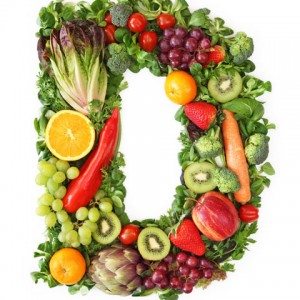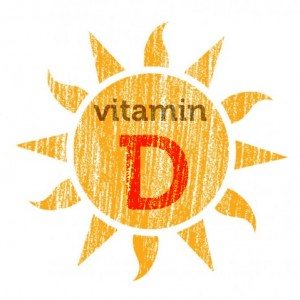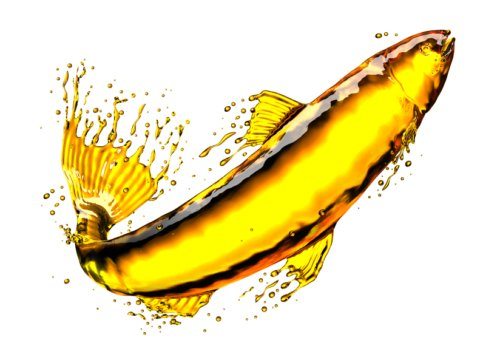& Why We Need It (The Vitamin That’s Not Just For Christmas!)
In this vitamin D-laden article we will look at:
- What is Vitamin D? – including different forms
- When is a Vitamin not a Vitamin? – when it’s a hormone
- Role of Vitamin D – its increasing importance for health & protection against disease
- Vitamin D Deficiency – the possible signs & symptoms
- Who is at Risk? – something of a trick question
- What is the Best Way to Get It? – different sources – but especially Sunshine!
- RDA – Recommended Daily Allowances & safety cautions
- Vitamin D Research – more details & research articles for those who are interested
For a general NHS advice leaflet on vitamin D please click on this link from West London Mental Health:
NHS – Vitamin D Advice
Sunshine on a Winter’s Day
I love the Sunshine – ever since I was a very small child. Even when I was only 3 or 4 I well recall being told off by my mum for staring at the Sun & being warned it wold make me go blind if I looked too long. Childlike, naturally it made me all the more fascinated. So I would take turns daring to quickly look & then see the after-image on my closed eyelids. I was lucky enough to be taken to Norway for a surprise holiday in 2015 & even in May the light lasted until 11pm. There is something very appealing to me about the quality & brightness of the Northern Winter Sun, with that low, raking light.

The bright sunshine on our holiday – Valldal, Norway
As I currently write I am still in Hungary, where the temperature has not climbed above -7C & last night dipped to below -24C! It sounds extreme compared to Britain, but as it is a dry cold it’s actually remarkably refreshing & invigorating. Everything becomes so vivid & lucid with a shining clarity. As such I find myself drawn to walks in the fresh air – much to the surprise of some my Hungarian family & friends, many of whom prefer to remain warm indoors. Indeed, don’t we all tend to want to hibernate a little when the darker, colder months beckon?

Sunshine is particularly important for maintaining levels of Vitamin D, especially in the winter months
Why Not To Hibernate – The Importance of Being Active
I am always telling clients that movement & exercise are crucial, especially in winter when we might be tempted to become more sedentary. Still, I was reminded of the importance of this by an article on 15 Science Based Benefits of Vitamin D by Authority Nutrition – & for an additional reason. That of using Sunshine for our physical health & well-being – in order to create vitamin D – the Sunshine Vitamin! This is an excellent reminder of why it is so important to still get your fresh air & sun exposure even if it does feel chilly & the sofa beckons to you in the winter months. It also inspired me to do some research of my own….
What Is Vitamin D?
Vitamin D is one of the fat-soluble vitamins (along with Vitamin A, E & K), meaning that it dissolves in fat & can be stored in the body for long periods of time. These four fat-soluble vitamins interact & work in harmony to help maintain bodily health.
There are two main forms:
- Vitamin D3 (cholecalciferol): found in some animal foods e.g fatty fish, red meat & egg yolks
- Vitamin D2 (ergocalciferol): found in some mushrooms
Vitamin D3 (cholecalciferol) is the one to focus on, as it is twice as effective at increasing blood levels of vitamin D as vitamin D2 – for research on this please see this article from JCEM (Journal of Endocrinology & Metabolism) Vitamin D3 Is More Potent Than Vitamin D2 in Humans

Our body utilizes Sunshine in order to produce, store & use Vitamin D
When is a Vitamin not a Vitamin?
When it’s a hormone! No, not a left-over Christmas cracker joke. Unlike most of the standard vitamins, it is in fact a steroid hormone, produced from cholesterol when your skin is exposed to sunshine.
- Storage – vitamin D is first stored in the liver as calcifediol
- Conversion – it is converted in the kidneys into calcitriol
- Steroid hormone – as calcitriol it interacts with receptors in nearly every cell in the body & thus can have a significant impact on our health
Role of Vitamin D – why is it important?
As per the above, it gives important signals to our body.
Main uses:

Misleading! Actually fruit & vegetables do not contain Vitamin D, although small amounts of vitamin D2 are in some mushrooms
- Optimal functioning of tissues & cells
- Controls amount of calcium & phosphate (e.g. it allows us to absorb these essential minerals)
- Essential for healthy bones, teeth & muscles
- Proper & Effective Immune function
- Improved disease resistance – there is increasing research on its role in protecting against diseases such as Cancer, Multiple Sclerosis & Diabetes (carry on reading for more information about this)
- NHS: The New Guidelines on Vitamin D
- The Role of Vitamin D in Human Health: A Paradigm Shift
- Benefits and requirements of vitamin D for optimal health: a review

The role of vitamin D in mental health is increasingly being explored by centres such as London-based rehabilitation & treatment centres like Cassiobury Court. Here nutrition, diet & adequate levels of vitamins & minerals such as vitamin D are considered a crucial part of holistic treatments: Cassiobury Court – Food and Nutrition
For more detailed research please see the bottom of this article
Vitamin D Deficiency – Signs & Symptoms
The Vitamin D Council advises that ‘ The symptoms of vitamin D deficiency are sometimes vague & can include tiredness & general aches & pains. Some people may not have any symptoms at all.’

Vitamin D – The Sunshine Vitamin
Signs & symptoms are therefore general but can include:
- Tiredness & fatigue
- Muscle & bone pain
- Muscle weakness
- Increased & frequent infections
- Impaired wound healing
- Bone density loss
- Hair loss
Who is at risk?
This is something of a trick question because….we ALL are potentially! Health officials are in agreement that no-one is immune, although actual deficiency can only be tested & diagnosed by your GP or hospital doctor via a blood test.

The best way to top-up your levels of vitamin D – regular safe exposure to sunlight
The NHS estimates that about a quarter of people in the UK may not have enough Vitamin D for optimum health
Given that access to sunlight is so crucial for production, lack of this for any reason may put you at risk. For example, in Australia & New Zealand necessary protection measures against skin cancer have also resulted in some issues with deficiency (see article Vitamin D & Sun Protection – getting the Balance Right). Obviously, you do need to be careful not to over-expose the skin or suffer sunburn. It’s very important to be fully-aware of the dangers of harmful UV rays & risks of skin cancer. However, there does need to be a balance of exposure to sunlight as well where possible & safe.
‘according to a 2011 study, 41.6% of adults in the US are deficient. This number goes up to 69.2% in Hispanics and 82.1% in African-Americans’
(‘Prevalence and correlates of vitamin D deficiency in US adults’ by Forrest, K.Y & Stuhldreher, W.L)
Risk factors include:
- Darker skin
- Excessive covering up of the skin – this may be through personal choice or for religious or cultural reasons
- Excessive use of Sunscreen
- Indoor lifestyle – avoiding outdoors/staying indoors/housebound
- Elderly – over the age of 65 the body can be less efficient at creating the vitamin. The elderly are also more likely to spend time indoors & cover up
- Pregnant & breast-feeding women
- Children under the age of 5
- Overweight or obese – less may be available as it can become stored in fat layers
- Diet – lacking in natural food sources of vitamin D
- Location – latitudes far from the equator where there is reduced natural sunshine
- Climatic conditions – lack of sunshine/increased cloud cover
What is the Best Way to get Vitamin D?
Now normally I am a big fan of gaining any vitamin & mineral needs naturally, through the consumption of food & drink. However, although vitamin D can be derived from foods, these are limited & it is found in only relatively small amounts in the following:

Cod Liver Oil is an excellent food source for Vitamin D
- Fish Liver Oil – best food source
- Fatty fish – Salmon, Tuna, Trout, Swordfish, Sardines, Mackerel
- Egg yolks (lower levels)
- Red meat (lower levels)
- Fortified foods – such as cereals, although as these are not natural, they are not the best sources
Best food source: Fish Liver Oil – 1 tablespoon of Cod Liver Oil contains 227% RDA – as opposed to only 75% in a 3oz serving of cooked Salmon. However, you would need to consume these amounts every day, so the easiest way to get your vitamin D is…
Sunshine! Best & essential source: Simply Sunshine! especially in the autumn & winter months. This also naturally encourages you to get some fresh-air & exercise.

Yay! – going out in the Sun is the best way to gain Vitamin D
RDA – Recommended Daily Allowance
However, as discussed this may not always be possible, or you may have one or more of the risk factors. As in the UK we are not renowned for our excessively sunny weather, the NHS also advises that it may be wise to take additional supplements in the winter months.
In the UK the NHS estimates that there is not enough sunlight for vitamin D production for about half the year, roughly between October – March
So, if you do decide to take supplements, how much should you take? The NHS advice from their website is currently:
- Breastfed babies from birth to 1 year of age should be given a daily supplement containing 8.5 to 10mcg, to make sure they get enough
- Safety: Babies fed infant formula should not be given a supplement until they are receiving less than 500ml (about a pint) of infant formula a day, because infant formula is fortified with vitamin D
- Safety: infants under 12 months should not have more than 25mcg a day

NHS advice on RDA for Vitamin D
- Children aged 1 to 4 years old should be given a daily supplement containing 10mcg
- Safety: Children aged 1-10 years should not have more than 50mcg a day
- Everyone, including pregnant/breastfeeding women, should consider taking a daily supplement containing 10mcg
- Between late March/April – September, the majority of people (aged 5 & above) will probably obtain sufficient vitamin D from sunlight when they are outdoors. So you might choose not to take a supplement during these months
- However, those in the at risk categories should consider taking a daily supplement containing 10mcg throughout the year
- Safety: Adults, including pregnant/breastfeeding women, the elderly, & children aged 11-17 years should not take more than 100mcg a day, as it could be harmful
If you’re interested in learning more about vitamin D: NHS – Vitamin D
The Vitamin D Council (based in the US) has a lot of information & you can sign up to their newsletters
There is an increasing amount of medical research on the effects of vitamin D deficiency & benefits of ensuring you have safe levels of it – for more information read the last section below, which summarizes some of what is available on PubMed online
Last but not least….Research – realizing how important Vitamin D is!
Traditionally, deficiency in vitamin D has been linked to bone deformities, growth retardation & diseases such as Rickets in children. This is seldom an issue in modern countries although this is very sadly still prevalent in the developing world.
However, research is now increasing awareness of the importance of this vitamin in our daily health. Although it is not certain that deficiency actually contributes or causes the below health issues, research has shown a clear link, with an increased risk of disease & mortality in those with deficiency or insufficiency. There is a lot of information out there, but the below links give a small idea of the current on-going research (Pub Meb website)
Vitamin D – Benefits of Sufficiency & Risks of Deficiency
- Vitamin D Deficiency – increased risk of diseases in general:
http://www.nhs.uk/Conditions/vitamins-minerals/Pages/Vitamin-D.aspx
https://www.vitamindcouncil.org/health-conditions/
http://ajcn.nutrition.org/content/87/4/1080S.long#sec-4
https://authoritynutrition.com/vitamin-d-101/ - Autoimmune diseases such as Crohn’s Disease & Multiple Sclerosis: http://jamanetwork.com/journals/jama/fullarticle/204651
- Asthma: https://www.ncbi.nlm.nih.gov/pubmed/25365192
https://www.ncbi.nlm.nih.gov/pubmed/26322509 - Bone health: deficiency has been linked to Osteoporosis (brittle bones) & decreased mineral density, Osteomalacia (softening of the bones), increased risk of breaks & stress fractures (especially in hips & legs)
http://A review of the health consequences of the vitamin D deficiency pandemic
Supplementation: reduction of risks & improved healing
https://www.ncbi.nlm.nih.gov/pubmed/26429406 - Cancer: https://www.ncbi.nlm.nih.gov/pubmed/16380576,
http://www.endocrine-abstracts.org/ea/0044/ea0044P129.htm - Dementia: https://www.ncbi.nlm.nih.gov/pubmed/20625021/
- Depression – the link between the two is uncertain, but there is evidence of higher levels of Depression in those who are deficient; it is believed that it may affect serotonin levels:
http://onlinelibrary.wiley.com/doi/10.1111/j.1365-2796.2008.02008.x/abstract
https://www.ncbi.nlm.nih.gov/pubmed/24632894
https://www.ncbi.nlm.nih.gov/pubmed/23377209
https://www.ncbi.nlm.nih.gov/pubmed/22790678
- Diabetes type I & II: https://www.ncbi.nlm.nih.gov/pubmed/11705562
https://www.ncbi.nlm.nih.gov/pubmed/18339654 - Heart Disease & High Blood Pressure: https://www.ncbi.nlm.nih.go/pmc/articles/PMC2726624/
https://www.ncbi.nlm.nih.gov/pubmed/25207362
https://www.ncbi.nlm.nih.gov/pubmed/18180395
- Immunity: https://www.ncbi.nlm.nih.gov/pmc/articles/PMC4346469/
https://www.ncbi.nlm.nih.gov/pubmed/20219962, https://www.ncbi.nlm.nih.gov/pubmed/25365192, - Mortality – general increase for those with deficiency
https://www.ncbi.nlm.nih.gov/pubmed/21242800, https://www.ncbi.nlm.nih.gov/pubmed/22319037
https://www.ncbi.nlm.nih.gov/pubmed/21735411, https://www.ncbi.nlm.nih.gov/pubmed/24938302/, https://www.ncbi.nlm.nih.gov/pubmed/17846391 - Musculoskeletal issues, such as muscular & joint aches, pain & weakness:
https://www.ncbi.nlm.nih.gov/pubmed/21199469
https://www.ncbi.nlm.nih.gov/pubmed/26431139
https://www.ncbi.nlm.nih.gov/pubmed/16718398
https://www.ncbi.nlm.nih.gov/pubmed/20642395
https://www.ncbi.nlm.nih.gov/pubmed/26022378
Supplementation to improve muscle strength, particularly in the elderly:
https://www.ncbi.nlm.nih.gov/pubmed/26000306
https://www.ncbi.nlm.nih.gov/pubmed/17302660

